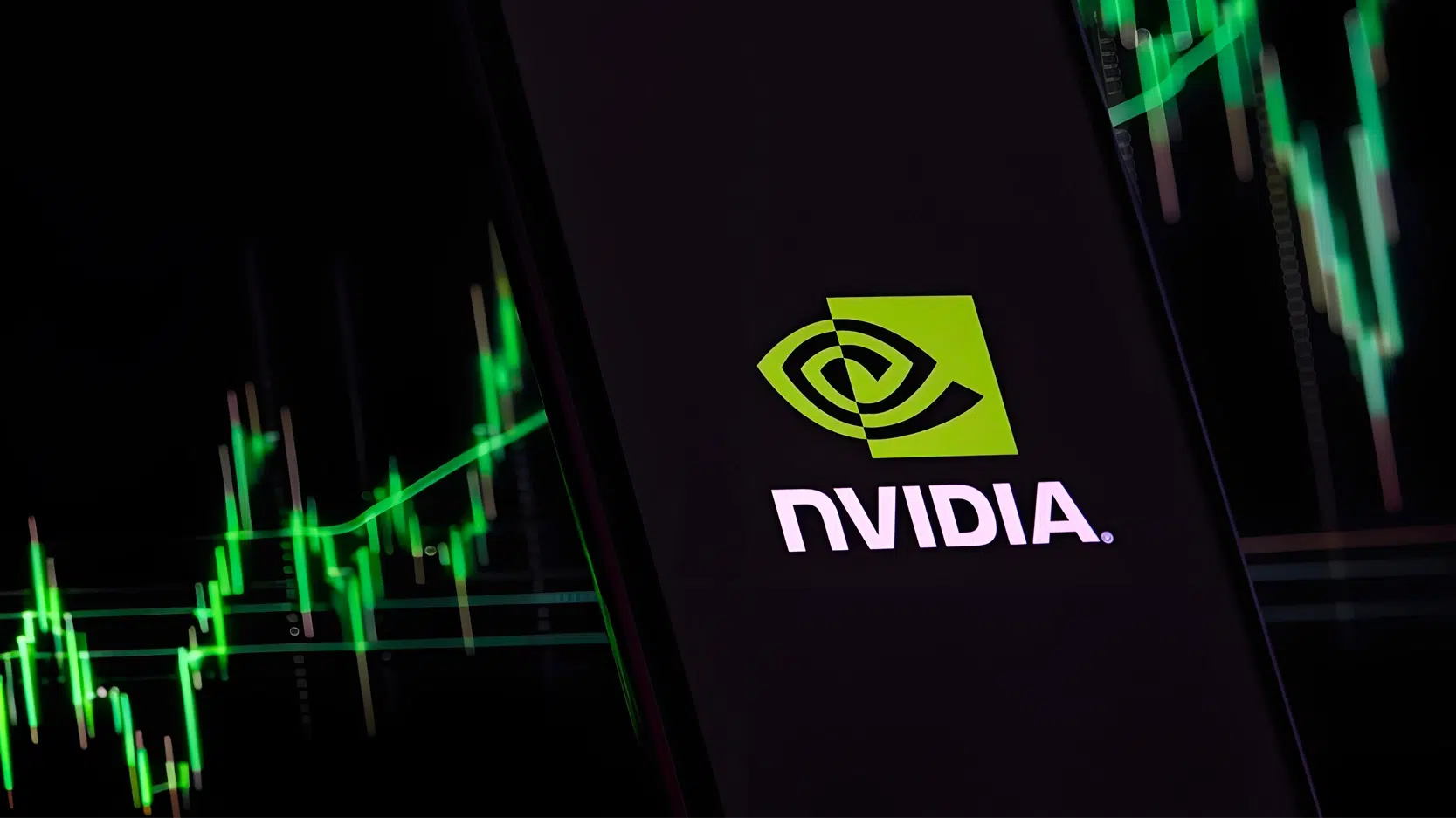Is a Stock Split Good News? A Complete Analysis of NVIDIA’s Split, Instantly Understand the Secrets of Stock Price Fluctuations!
Stock Split: A Sweet Treat or Poison? Let’s Talk About NVIDIA
The hottest topic in financial news recently has been the ‘1-for-10’ stock split drama by AI giant NVIDIA! Are you also curious why the stock price went from over a thousand dollars to just over a hundred, yet the market is cheering? What’s the deal behind this? Is a stock split a gift from heaven or a poison pill coated in sugar?
Hey, don’t rush to follow the crowd. I’m Evan, and today I’ll use my veteran experience to help you understand the duo of Stock Splits and Reverse Stock Splits, so you can see deeper and more clearly than others and make smarter investment decisions when facing similar market news in the future.
Grasp the Core Concept First: A stock split or reverse split is just like cutting a company’s ‘big pizza’ into more or fewer slices. The pizza itself (the company’s market capitalization) doesn’t get bigger or smaller.
What Exactly Are Stock Splits and Reverse Splits?
Stock Split
Imagine you have one share of NVIDIA stock worth $1200, like a whole family-sized pizza. For many retail investors, this pizza is too expensive to afford.
So, NVIDIA decides to cut it into 10 slices, making each slice worth $120.
This is a ‘1-for-10’ stock split. The single share you held becomes 10 shares, but the total value remains $1200 ($120 x 10). This action doesn’t change the company’s total market cap, but it significantly lowers the price barrier per share, allowing more people to have a ‘taste’ of this delicious pizza.
💡 Recommended Article
New to stock investing? Don’t worry! We’ve prepared a beginner’s guide to stock investing to help you build a solid foundation.
What is the P/E Ratio? A Thorough Guide to Understanding Stock Valuation
Reverse Stock Split
A reverse split is the complete opposite. Imagine a company’s stock price drops to just $1, looking like a “penny stock” or “junk stock”. This can be embarrassing and may also risk delisting from the stock exchange.
At this point, the company might announce a ‘1-for-10’ reverse split. Your 10 shares at $1 each are consolidated into one share worth $10. The total value of your holdings remains the same, but the stock price looks much more ‘respectable’. This is usually a last-resort measure for a company to maintain its stock price, avoid delisting, or improve its market image.
Is a Stock Split Bullish or Bearish? Understand the Pros and Cons with One Chart
Many novice investors get excited upon hearing about a stock split, thinking they’re about to strike it rich. Calm down! There are two sides to every coin. Let’s break down the pros and cons of each.
Pros of a Stock Split
- Increases Stock Liquidity: The price becomes more accessible, more people trade it, and the market becomes more active.
- Attracts More Investors: Retail investors can easily afford high-priced stocks, broadening the shareholder base.
- Sends a Positive Signal: It usually indicates that the company is confident about its future growth and wants more people to get on board.
Cons of a Stock Split
- Potential Stock Price Volatility: An increase in retail investors might lead to more short-term trading, causing price instability.
- Doesn’t Change Company Fundamentals: Ultimately, it’s just financial wizardry. The company’s profitability and product competitiveness remain unchanged.
Pros of a Reverse Stock Split
- Boosts Stock Price: Sheds the ‘cheap stock’ label and meets the minimum price requirements for some institutional investors.
- Avoids Delisting Risk: Keeps the stock price above the minimum standard set by the exchange.
Cons of a Reverse Stock Split
- Can Cause Investor Panic: The market often interprets it as a sign that the ‘company is out of options,’ a potential warning of poor management.
- Reduces Stock Liquidity: A higher stock price may scare away some retail investors, potentially leading to lower trading volume.
Case Study Analysis: Understanding the Art of Splits with NVIDIA and GE
A Textbook Maneuver: NVIDIA (2024)
NVIDIA’s recent stock split is a textbook example of success. At the peak of the AI wave, the company’s performance was soaring, and its future looked bright. A split at this time was widely interpreted by the market as a ‘king’s move’ to allow more followers to join the AI feast. Unsurprisingly, the split attracted a massive influx of retail capital, and the stock price continued to strengthen. For more details on NVIDIA’s split, you can refer to the related report from Reuters.
A Turnaround Survival Tactic: General Electric (GE) (2021)
Now let’s look at the ‘1-for-8’ reverse stock split by the veteran industrial giant General Electric (GE). At the time, GE’s stock price was in a long-term slump, and the company was in the painful process of transformation. Through the reverse split, GE successfully boosted its stock price from around $10 to $80, not only saving face but also stabilizing the confidence of institutional investors. This move, though seemingly desperate, did buy the company time and space for its subsequent restructuring and transformation.
How to Predict if the Stock Price Will Rise or Fall After a Split?
This is the question everyone cares about most, right? Stop naively asking ‘will it go up or down after the split?’ Experts make a comprehensive judgment based on the following three aspects:
1. Examine the Company’s ‘Health’: Fundamentals are King
This is the most crucial point! A stock split itself does not create value. Whether the stock price can rise in the long term ultimately depends on the company’s fundamentals. Is the company profitable? Does its industry have a future? Does it have a competitive moat that others can’t easily cross? Like NVIDIA, the confidence for the split came from its absolute dominance in the AI chip field. To learn more about analyzing company fundamentals, you can check out our ‘Beginner’s Guide to Forex Investing: Demystifying Fundamental Analysis’.
💡 Recommended Article
Want to dive deeper into forex knowledge and investment skills? Click the link below to master more financial literacy!
Beginner’s Guide to Forex Investing: Demystifying Fundamental Analysis
2. Observe the Market ‘Wind’: Sentiment is the Catalyst
The market is emotional. The same stock split occurring in a bull market versus a bear market will have a completely different atmosphere. You need to observe the general market perception of the split. Is it seen as a positive, like with NVIDIA, or interpreted as a management gimmick? Read analyses from major financial media and discussions in online communities to gauge the market’s temperature.
3. Assess the Macro ‘Climate’: Go with the Flow
Finally, don’t forget to look at the big picture. What is the current overall economic environment? Is the Fed raising or cutting interest rates? Are there any geopolitical risks? If the broader market is declining, even a company with strong fundamentals might not escape a downturn after a split. ‘Going with the trend’ is always a golden rule in investing.
Frequently Asked Questions (FAQ)
❓Do I need to do anything after a stock split?
Absolutely nothing. Your brokerage will handle everything automatically. The only change you’ll see is that the number of shares in your account has increased, the price per share has decreased, and the total market value remains the same.
❓Will my ownership percentage change after a stock split?
No. Since all shareholders’ shares increase by the same ratio, your ownership percentage in the company remains unchanged.
❓Why would a company do a ‘reverse split’? Is it a bad sign?
Generally, a reverse split is considered a warning sign. It suggests that the company’s stock is performing poorly and may be facing operational difficulties or a delisting risk. While not always the case, investors should be more cautious and scrutinize the company’s fundamentals when this happens.
❓Does the stock price of every company that undergoes a split go up?
Absolutely not. A stock split has no direct correlation with the long-term trend of a stock price. It’s more like a ‘signal amplifier.’ If the company is a top performer (like NVIDIA), the split will amplify its strengths. If the company’s fundamentals are weak, the split might accelerate its price volatility and decline.
Conclusion
In summary, a stock split itself is a neutral financial tool. It’s like a knife that can be used to slice a delicious pizza into more pieces or, out of necessity, to reshape a company’s image. Its true impact depends on ‘who’ is using it, ‘when’ it’s used, and ‘why’ it’s used.
As smart investors, we must look beyond the surface of the split and see the underlying substance—focusing on the analysis of company fundamentals, the grasp of market sentiment, and the judgment of the macroeconomic environment. The next time you see news about a stock split, I hope you won’t be just another follower, but an expert investor capable of independent thought and wise decisions!
Disclaimer: The content of this article is for educational and informational purposes only and does not constitute any investment advice. All investments involve risk, and past performance is not indicative of future returns. Before making any investment decisions, please conduct your own independent research and consult with a qualified financial advisor.
Related Articles
-
As the announcement of the 2025 Budget on February 26, 2025, approaches, Hong Kong society is closely watching how the government will balance the need for relief measures with structural reforms amidst the pressure of its HK$680 billion fiscal reserves. Financial Secretary Paul Chan Mo-po's recent emphasis on "precision in...2025 年 10 月 11 日
-
The Hong Kong Securities and Futures Commission (SFC) officially granted operating licenses to two cryptocurrency trading platforms—PantherTrade and YAX—on January 27, 2025, further promoting the compliant development of Hong Kong's crypto market. Since launching its licensing program in mid-2024, the SFC has issued licenses to seven Virtual Asset Trading Platforms...2025 年 10 月 11 日
-
As the U.S. Consumer Price Index (CPI) for January exceeded expectations, market forecasts for the Federal Reserve's future monetary policy shifted, causing the U.S. Dollar Index to rise rapidly and leading to a pullback in gold prices. However, despite this pressure, the gold market still shows potential for growth, primarily...2025 年 10 月 11 日












